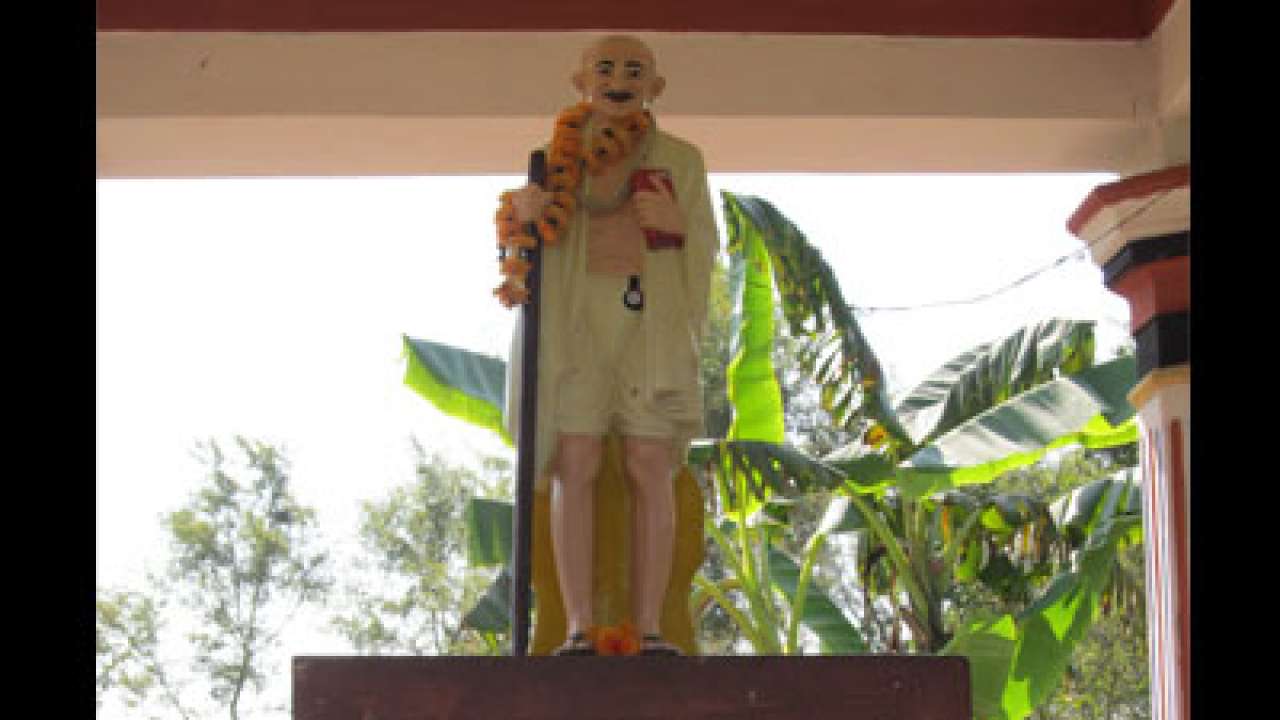
As the world celebrates the 'International Day of Non-Violence' on Gandhi Jayanti, newspapers across the country tell us that the Mahatma’s followers still exist; that his principles are relevant even today and that his following doesn't seem to be limited by any borders.
The Mahatma was martyred on January 30, 1948, but I've witnessed the death of his principles and values every single day in our country. Not just his principles, his memories, related artifacts and memorabilia are being slowly nibbled over by widespread corruption. I look at statues of the father of the nation, where round the year, no one but dogs and other animals frequent, only to remember him and offer flowers and homage on two occasions – his birth and death anniversary.
Gandhi’s karma bhoomi Champaran – from where he started his non-violent struggle – is also my janma bhoomi (birthplace). It is unfortunate, however, that people in Gandhi’s Champaran are gradually forgetting him.
On April 15, 1917, Mahatma Gandhi first visited the Motihari railway station -- the same station from where he started his long struggle of Satyagraha. In the memory of his visit, a former railway minister had got a Gandhi statue installed outside the station. The statue has long been damaged and Bapu’s famous lathi is missing for years. Despite repeated appeals by the Gandhi Sanghralaya Committee to provide security, the local administration has so far failed to act. Same is the fate of another statue at the Anumandal Mukhyalaya Chowk in Pakdidayal, east Champaran.
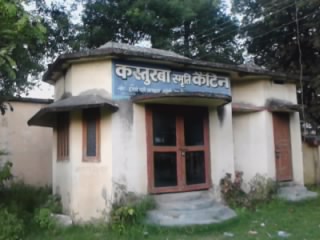
Photo: Kasturba Smruti Canteen
My search for Gandhi took me to the Bhitiharwa Ashram, originally known as the Kasturba Sewa Kendra, inaugurated by Mahatma Gandhi in November 1917. The Ashram’s walls have hundreds of framed archival photos of Gandhi’s visit; now nearing their demise, describing the sordid state of artifacts and relics related to Gandhi. One can only find Gandhi in the promises made by politicians, many of whom swear by Gandhian principles but have failed to even save the memorabilia and artifacts associated with his name.
I then went to the Vrindavan Ashram in west Champaran. This is the same Ashram where Gandhi, on invitation from Pt. Prajapati Mishra, Gulab Khan and Peer Muhammad Moonis, attended the fifth session of the Gandhi Seva Sangh on May 2, 1939. Two days later, during this session, the Vrindavan Ashram saw the birth of 29 educational institutes to promote industrial development and vocational education. Bapu, in his pursuit to achieve a self-sufficient education system, even laid down the foundation of a basic school here.
But what you’ll find there now are only his memories. Greed has made people even sell the Ashram’s land. In a place where Gandhi used to spin yarn on his charkha, the structure is slowly falling apart. Many charkhas are missing while the ones that remain are broken. In fact, Vrindavan ashram’s only shop which used to sell cotton, silk and woolen products has been shut for more than 15 years.
Mathura Bhagat, a gardener from Gandhi's days in the Ashram, was unable to afford treatment for his health and died around three years ago. Now his grandson Satish Kumar looks after the Gandhi legacy. His primary work used was to garland the Mahatma’s statue every day, but even that was made obsolete by local MLA Vaidnath Kushwaha when he garlanded the statue with a set of plastic flowers. Even the bulbs from the place are stolen often, laments Satish, adding that the grim financial situation has forced him to now refrain from putting up new ones.
The Ashram once had 103 bigha land under the Vrindavan Gandhi-Kasturba Trust, of which a major portion was distributed for the construction of a Jawahar Navoday Vidyalaya, a Rashtriya Buniyadi Vidyalaya, a Khadi Gram Udyog Sangh, a SC hostel for students, post office, health centre, Shiv temple etc. Collections from these institutions were sent to the Sabarmati Ashram in Gujarat which was then distributed as scholarships for poor students.
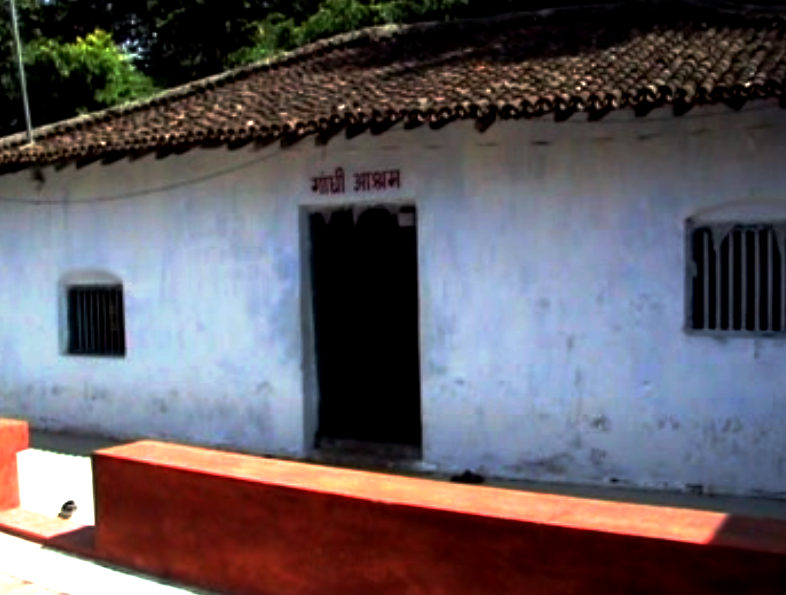
Photo: Gandhi Ashram, Champaran
According to Jagdish Narayan, vice-president of the Bihar State Panchayat Parishad and Thakur Prasad Tyagi, who was once part of the JP movement, the Trust was disbanded in 1980 by the then District Magistrate SN Dubey. Dubey became the self-appointed authority of the land while Chanpatiya Circle Officer BD Tiwari was made its custodian. When the custodian retired, both Narayan and Tyagi told me, he took away all the land documents, leaving the Ashram to its fate. Gradually, the remaining Ashram land was sold. Even the piece of land where the Ashram stands is being arranged to be sold, they allege.
Seven years ago, a committee was constituted to investigate the matter. The committee found that 35 acres of land belonging to the Ashram was encroached upon and the rest was sold. Receipts of sale found with the landowners turned out to be fake, while the government had no records to show for the land. The committee eventually recommended a drive to claim the encroached parts, but the local district administration is yet to act on it.
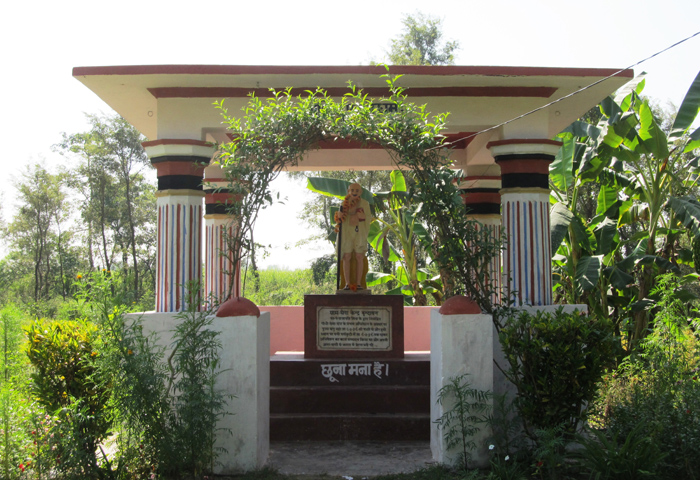
Photo: Inside the Vrindavan Ashram
On the recommendation of the Concept Committee Raj Bhawan, Patna, the Bhitiharwa Ashram was beautified with several Gandhi bhawans, which now lies in a bad state. Nearly Rs 20 lakh was spent on this beautification drive of structures that were made from sub-standard construction materials. Self-proclaimed Gandhian, officials and ministers didn’t pay any heed to the several complaints filed by the locals pertaining to the irregularities in using the fund. Only a decade after being built, the walls in these buildings have developed cracks as they struggle to stand the test of time. Work on many Rashtriya vidyalayas, a reflection of Gandhi’s ideology, was started in his time -- some even inaugurated by Gandhi himself. But to find Gandhi in these vidyalayas one will have to probably look for their foundation stones buried under layers of dirt.
Located in West Champaran’s Bettiah, Hazarimal Dharamshala also lies in a horrible situation. Shopkeepers nearby have their eyes set on the crumbling Dhramshala building – waiting to build a shopping complex in that spot. Hazarimal Dharamshala has been proclaimed a protected monument by the state government and is under the care of the Department of Youth, Art and Culture (Directorate of Archaeology) after a direction from the Patna High Court.
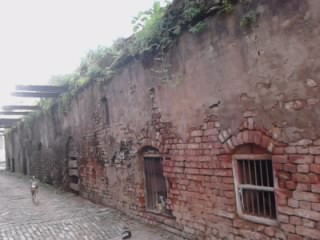

Photo: Hazarimal Dharamshala, Champaran
According to Gandhian Naresh Chandra Verma, the caretaker of Pinjarapol Gaushala, people who killed Gandhi now control the gaushala started by Gandhi in Bettiah and the only purpose it serves is to earn money for them. People who refer to cows as their mother don’t even bother to ask about this gaushala. Even senior politician Sushil Kumar Modi went there but nothing fruitful came out of that visit.
Naresh claims that the former secretary Ramavtar Singhania, who was also the local RSS head, had written to his close friend and former Prime Minister Atal Bihari Vajpayee complaining about the state of the gaushala, yet nothing happened.
Unfortunately, many of the artifacts related to Gandhi lie in a disappointing state. Located in Gandhi’s Champaran, an experimental ground for his non-violent Satyagraha movement, the office for promoting Gandhian literature struggles to protect the writings on Gandhi’s principles. The proposed land passed for the opening of an Open University in Bankat, East Champaran still awaits the start of its construction.
The demand for a Mahtama Gandhi university in Champaran is quite old. Nothing has happened other than a sign board indicating the start of an open university. People who donated land for this project are an unhappy lot.
I often visit the Gandhi museum and memorials installed in Motihari, East Champaran. After these visits, I realised the significance of Bapu’s values in our country. I understood that while his name has become a brand that sells across the globe, his ethos finds no takers. As usual, Gandhi Jayanti will be celebrated as a routine. The power-hungry elite do not even think of the need to have Gandhiji or his philosophy of non-violence and peace in their politics. Long ago they used to win elections in the name of Gandhiji, but now it’s caste, community and cash that determines who would win. Gandhiji stands defeated in his own karma bhoomi.
I am also reminded of my father who died on this day, four years ago. A believer of Gandhian ethics, he told me that non-violence and peace are the fundamental principles behind the sustenance of human civilisation. My struggle as an RTI activist draws inspiration from both the Mahatma and my Abbu.
(Originally from Betiah District, West Champaran, Afroz Alam Sahil is now a Delhi-based RTI activist and journalist. He also runs an alternative news portal Beyondheadlines)